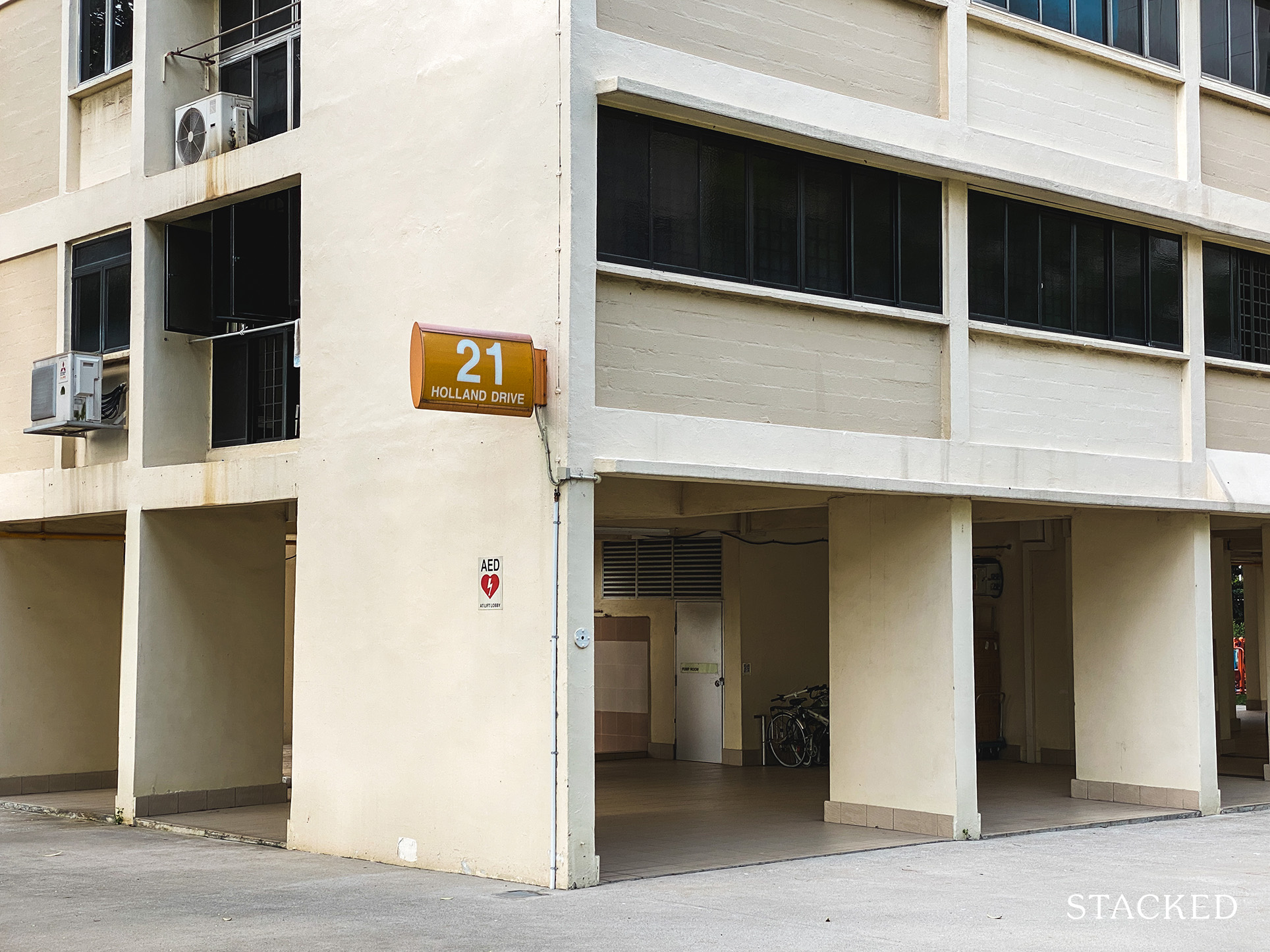5 Special Old Features Of HDB’s In Singapore That Are Hard To Imagine Today
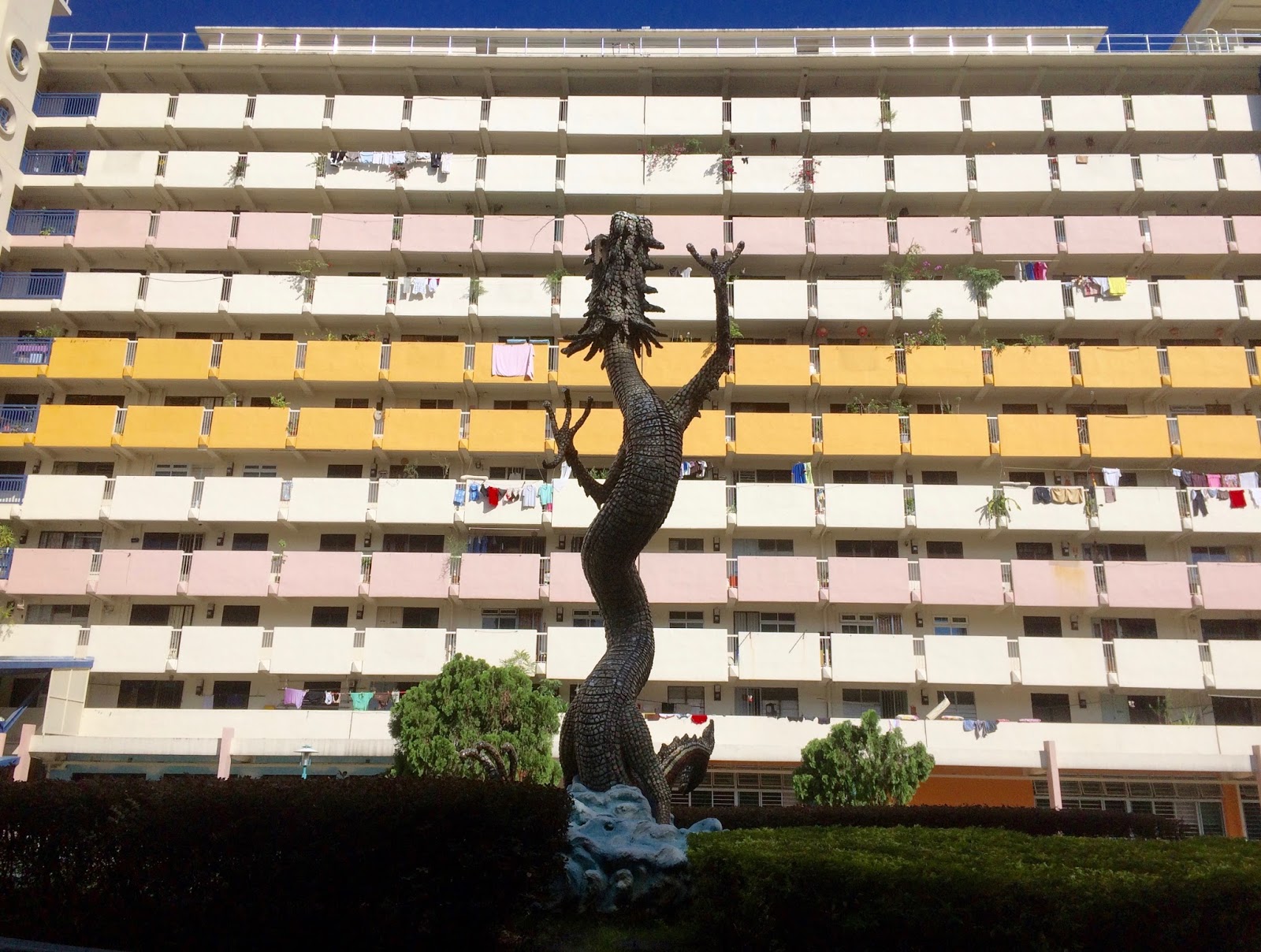
Get The Property Insights Serious Buyers Read First: Join 50,000+ readers who rely on our weekly breakdowns of Singapore’s property market.
It is frankly quite amazing to see the progress Singapore has made over the last few decades. Today, we have structures like the now iconic Marina Bay Sands, the glittering lights from Gardens By The Bay, and the current tallest skyscraper in Singapore – Tanjong Pagar Centre.
But yet even with these advancements, many people I know still constantly reminisce about the past. There’s even a whole site set up purely for remembering the good old days of Singapore (check it out here, it’s well worth trawling through).
So when it comes to HDB housing (where nearly 80% of the population live), it is no wonder that HDBs, or public housing in general, remains a popular topic of discussion for many.
Since the first HDB blocks were completed in 1961, public housing has long transformed. While I have previously explored how internal floor plans of HDBs have drastically changed, it is abundantly clear that other aspects of public housing ranging from aesthetics to amenities have also been changing.
Looking back at a 60-year history, these are 5 interesting features of HDBs I have discovered.
#1 Superstitious Structures
While most structures and facilities built in modern HDB estates now serve specific purposes (i.e. encourage active aging), this was not always the case.
In older estates, it was not uncommon to see structures built for decorative, or even fengshui intents. One such structure is the dragon fountain in the Whampoa estate that was built in 1974. Standing at 4.8 metres, the “scaled body of the surging dragon is made up of hundreds of red, green and pink porcelain pieces” and used to “spout water”.
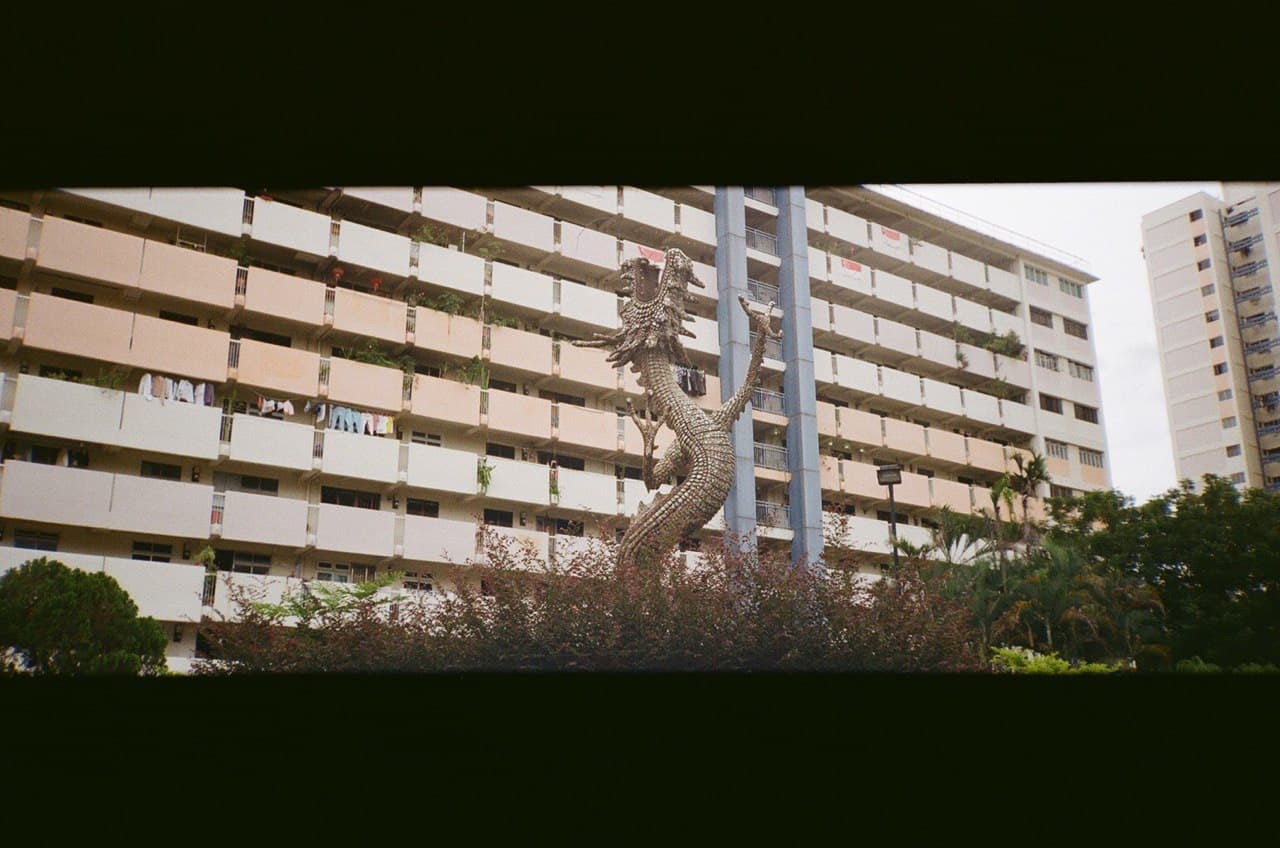
Source: Chan Shao Kaye
Although it is part of a former park, the underlying superstitious nature of the structure cannot be ignored, as dragons are typically associated with “good fortune and longevity”.
Looking beyond sculptures, it is apparent that such superstitious notion has also seeped into our everyday life. One notable example would be the “dragon-shaped sand-based” playgrounds that were built in the late 70s. (Yes, that famous one at Toa Payoh).
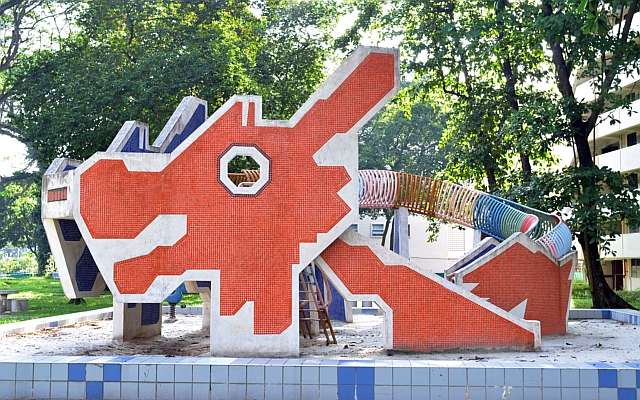
Source: The Straits Times (2013)
Although these structures were built for the enjoyment of children who may not be aware of these traditional associations, the dragon icon was nevertheless still adopted. While other icons, such as the elephant and duck, were eventually adopted as well, it is ultimately still the dragon that we all fondly remember.
#2 Barbed Wire Fences
As compared to other countries, Singapore is seemingly very protective over its greenery. (As much as it seems to have lapsed recently with the Kranji debacle).
In the past, contractors have been reported to be slapped with heavy fines when they cut down trees without authorisation. In fact, under the Parks and Trees Act, even “damaging or removing plants or parts of plants from parks and gardens is not permitted”.
However, these regulations are not even as extreme as what happened in the 70s.
Apparently, HDB had previously deployed barbed wire that is capable of “inflict[ing] deep cuts and lacerations” to “protect young trees and newly-turfed areas in the grounds of HDB estates”.
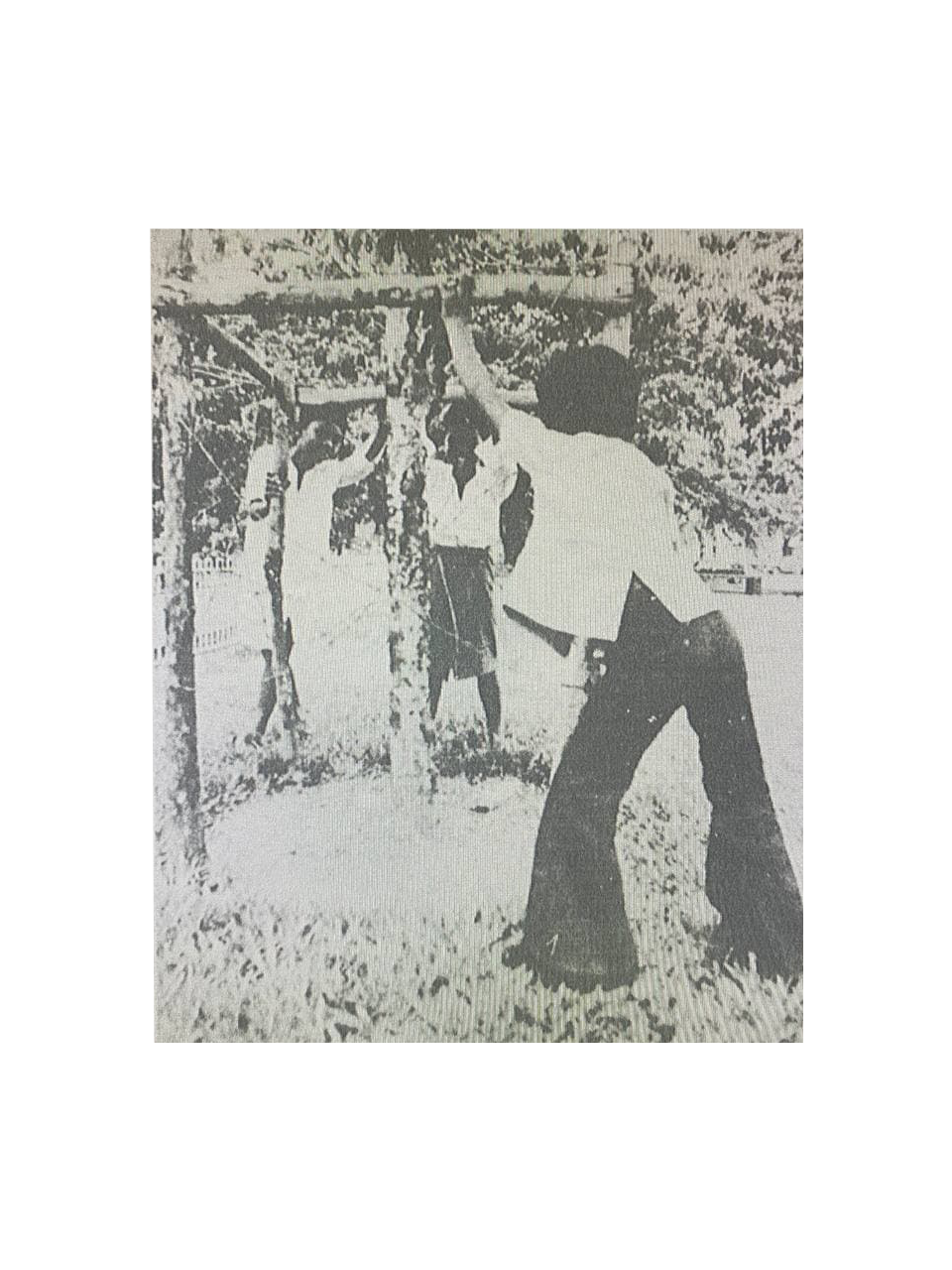
Source: New Nation (1979)
While these barriers were just temporary structures put in place for “up to three months”, it is difficult to envisage that they were widely deployed, even near areas designed for child play.
Imagine the uproar if you were to see something such as this today.
#3 Lifts stopping at mezzanine floors / selected floors
Although it is hard to fathom today, public housing was not as accessible in the past as it is presently.
Due to Singapore’s growing aging population, HDB officially launched the Lift Upgrading Programme in 2001 to “hasten the process of lift upgrading in order to improve accessibility and mobility for the elderly”, although it had already begun to install more lifts decades before. Prior to this, it was common to have lifts stopping only at mezzanine floors, or even on selected floors. For residents to live on floors without lifts, it is then part of their daily routine to climb the stairs.

Source: New Nation (1979)
While I was too young to see some of the features listed earlier, I did manage to experience this particular feature for a few years.
In my particular block, I remember the lifts were designed to only stop on the 12th floor, while I stayed on the 13th floor. Thus, it was always a race between my brother and I to see who would race up the last flight of stairs and reach home first. While others may find this feature inconvenient (especially if you had to carry heavy groceries), it was part of my fond childhood memories.
Looking beyond my nostalgia, it is easy to see why HDB has decided to remove many of these lifts. Although the official reason to launch the Lift Upgrading Programme was to improve accessibility for the elderly (and others with physical disabilities), I believe sanitation might also have been a contributing factor.

As these lifts were only designed to stop at selected / mezzanine floors, they were often out of the public eye. As such, there were many opportunities for individuals, specifically “children, adults and sometimes, women” to publicly urinate.
A huge part as to why this was possible was also due to the design of the lift mechanism. As most lift doors were designed to close automatically after some time, anyone could easily do their business while the lift remains on the same secluded floor. Given that most lift doors did not come with apertures, it was difficult for other residents to notice cases of public urination.
More from Stacked
Should We Sell Our Old HDB Flat In CCK And Buy Another Resale Or Keep For Passive Income?
Hello Stacked Homes
In fact, public urination was so common that Mr Chris Tan, a HDB representative, had to publish a letter urging “parents to instruct their children not to urinate in lifts”. And if that wasn’t enough, HDB even had to install Urine Detection Devices to prevent further escalation.
Luckily, as the population becomes more educated, public urination in lifts has almost ceased to exist.
Fast forward to 18 years later, HDB has finally completed its Lift Upgrading Programme. However, due to “cost, technical and site constraints”, there are still “around 150 blocks across Singapore which remain without lift access on some floors”.
With that said, it is likely that such lifts might still remain present in Singapore, even if just for a while more.
#4 Ground-floor Apartments
Although ground-floor units can still be found in Singapore, most people tend to consider them as non-viable options when it comes to choosing their homes.
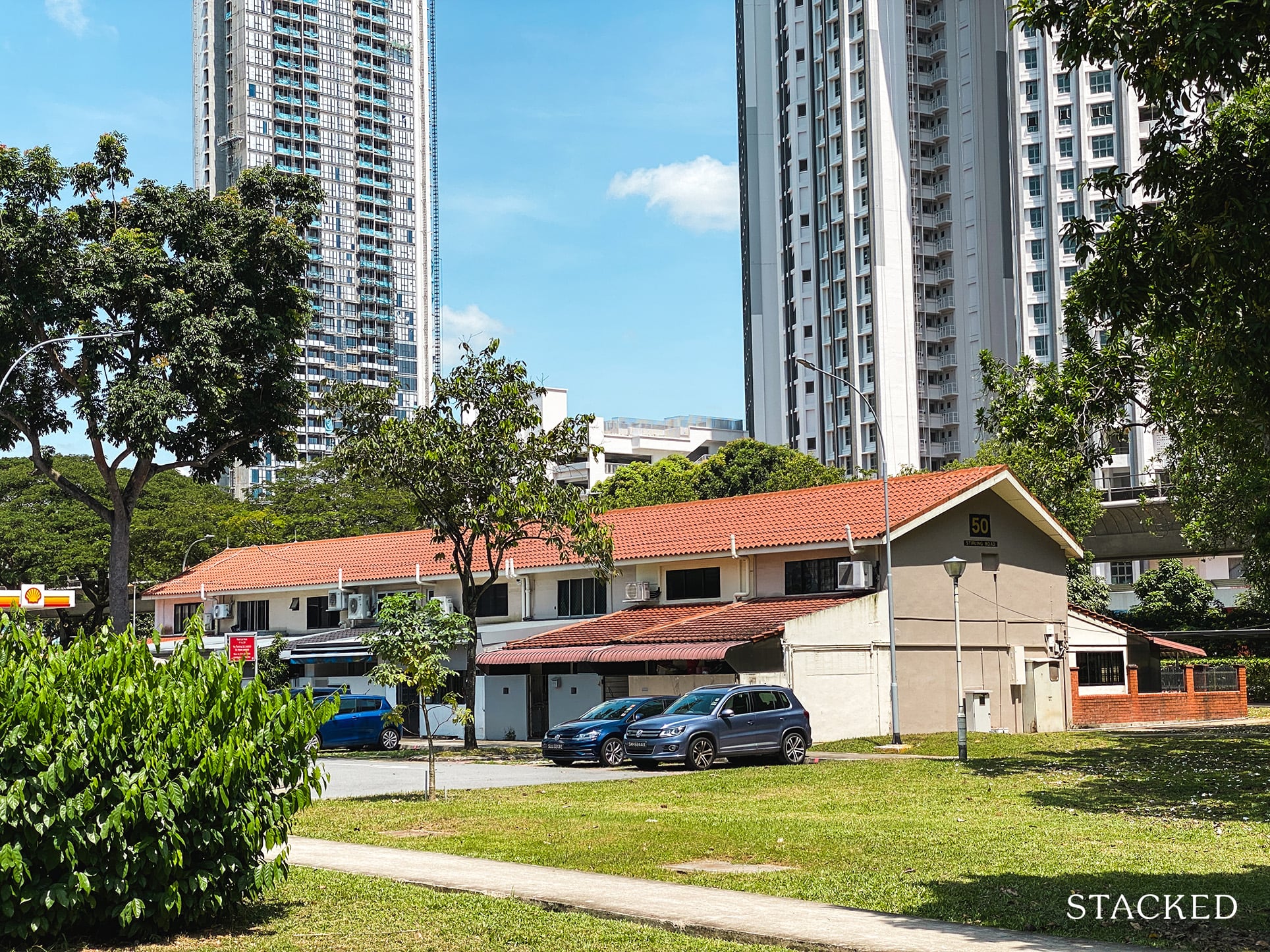
Looking back on HDB’s history, ground-floor units were built even in Queenstown, one of Singapore’s earliest housing estates. While the initial goal for HDB was to build as many units as possible to address housing needs, these units were also built to cater to the needs of individuals with physical disabilities or health issues.
Although now many Singaporeans tend to veer away from such units given their proximity to public areas, these units were once very popular, especially in walk-up apartment buildings with no lift access.
However, when void decks were introduced in the 70s, these ground-floor units were not built as much as HDB began to realise the importance of shared spaces.
Moreover, as amenities started to improve (especially with lift access on every floor), the fact that these units are more prone to noise and bug infestations became more prominent. So naturally, homeowners started to shun such options.
Today, ground-floor units are more commonly seen in private developments, where there is generally a greater sense of privacy for occupants. Nevertheless, it is still wonderful to see that the kampung spirit was once prevalent even after people started staying in concrete buildings.
#5 Natural Landscaping
Out of all the features, what really surprised me was the natural landscaping in HDB estates.
Urban greenery has been a concept that is regaining popularity in recent years. Through initiatives such as the PEG Roof Tray, Verti.Gro and Floating Wetlands System, HDB is striving to “introduce greenery to the urban landscape” and to “ [bring] nature closer to [people’s] doorstep”. While these initiatives are worth celebrating for their ability to “reduce heat emissions from building surfaces”, it is not to say that they have no shortfall.
Although HDB claims that these greening solutions will “[improve] the aesthetics of HDB estates”, I believe over time this will also contribute to the homogenisation of HDBs in general, as more and more exteriors become covered with the same greenery systems. Moreover, as many of these initiatives implemented on “rooftop[s] and vertical facades”, it feels as if the authorities are trying to maximise all available space with these greening solutions. Instead of feeling relaxed and free as most do in the presence of nature, residents might become overwhelmed here.
Perhaps this is why HDB’s older versions of landscape appear so refreshing to me?
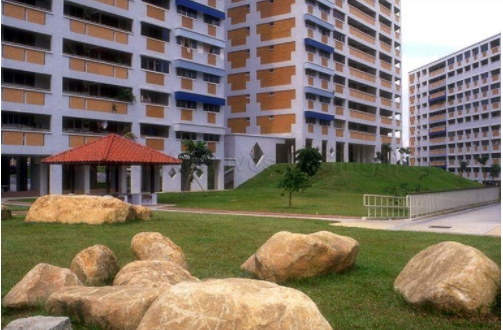
Take this example of landscaping at the Bukit Panjang Ring Road estate for instance, the rocks were laid out in a relaxed manner. While it may not be as effective as a rooftop garden in lowering neighbourhood temperatures, it does make for a more enjoyable space, both emotionally and visually.
It provides the space for individuals to gather, and is open-ended enough to not pre-determine any form of leisure activity. Just imagine coming here on a breezy, late evening.
Today, I believe it is difficult to find such landscaping in Singapore anymore.
Closing Thoughts
Looking back, a lot has definitely changed in 60 years.
Although most HDB estates have been refurbished or built to be convenient, well-connected and clean, it is undeniable that older estates tend to have features that give them an unique identity.
Although some of these features are still present today, most of them have been altered to provide more safety. For instance, the pool surrounding the dragon fountain has since been filled in with soil, and the base of most dragon playgrounds have been “laid with rubber mats”.
While greater safety is often appreciated, I just wonder how far we would go to trade the sense of uniqueness, freedom and dynamism for safety. Is there a way to preserve these sentiments without compromising personal safety?
I wonder.
Sources:
- Dragon Whampoa Drive – Dragon Fountain @ Whampoa Drive
- Remember Singapore – Singapore Trivia – Old Dragons of Whampoa and Toa Payoh
- Yahoo News – Where Did The Dragon Of Whampoa Drive Come From?
- Straits Times – Is It Illegal To Pluck Leaves From A Roadside Tree?
- NLB – Barbed Wire Article
- NLB – Lift Upgrading
- NLB – Lifts Stops At Mezzanine Floor
- Straits Times – Living Without Lifts On Every Floor
- HDB – Urban Greenery
- NAS – Bukit Panjang Landscape
At Stacked, we like to look beyond the headlines and surface-level numbers, and focus on how things play out in the real world.
If you’d like to discuss how this applies to your own circumstances, you can reach out for a one-to-one consultation here.
And if you simply have a question or want to share a thought, feel free to write to us at stories@stackedhomes.com — we read every message.
Celine H
Celine is an architecture student who doesn’t want to be an architect. Passionate about spaces, the arts and cultural heritage, she now spends her days writing, seeing, feeling and exploring.Read next from Property Market Commentary

Property Market Commentary Why This Once-Ulu Town In Singapore Is Going To Change (In A Big Way)

Property Market Commentary I Lived In Bayshore When It Was ‘Ulu’. Here’s How Much It Has Changed

Property Market Commentary Why The Singapore Property Market Will Be Different In 2026 — And It’s Not Just About Prices

Property Market Commentary 2025 Year-End Review Of The Singapore Property Market: What The Numbers Reveal
Latest Posts

Editor's Pick We’re In Our 50s And Own An Ageing Leasehold Condo And HDB Flat: Is Keeping Both A Mistake?

Pro How A 625-Unit Heartland Condo Launched In 2006 Became One Of 2025’s Top Performers

Property Investment Insights Does Buying A One-Bedroom Condo Still Make Sense As An Investment In 2026

Editor's Pick This HDB Just Crossed $1.3M For The First Time — In An Unexpected Area

Singapore Property News “I Never Thought I’d Be Sued by a Tenant.” What Long-Time Landlords in Singapore Miss

Editor's Pick HDB Resale Prices Finally Slowed in 2025 — Will It Continue in 2026?

Singapore Property News Breaking News: District 23 Condo Sells Out In Under Two Years At $2,120 Psf Average

On The Market Here Are The Cheapest 3-Bedroom Condos in Central Singapore You Can Still Buy From $1.15M

Pro This 21-Year-Old Condo Didn’t Sell Out Initially, Yet Became A Top Performer

Editor's Pick What I Only Learned After My First Year Of Homeownership In Singapore

Singapore Property News Why More Land Doesn’t Automatically Fix Housing In Singapore

On The Market Here Are The Cheapest 4-Room HDB Flats in Central Singapore You Can Still Buy From $490K

Editor's Pick Should We Buy An Old 99-Year Leasehold Condo To Live In: Will It’s Value Fall When The Lease Runs Out?

Pro How A Once “Ulu” Condo Launched In 1997 Became A Top Performer

Editor's Pick I Reviewed A New Launch 4-Bedroom Penthouse At Beauty World



